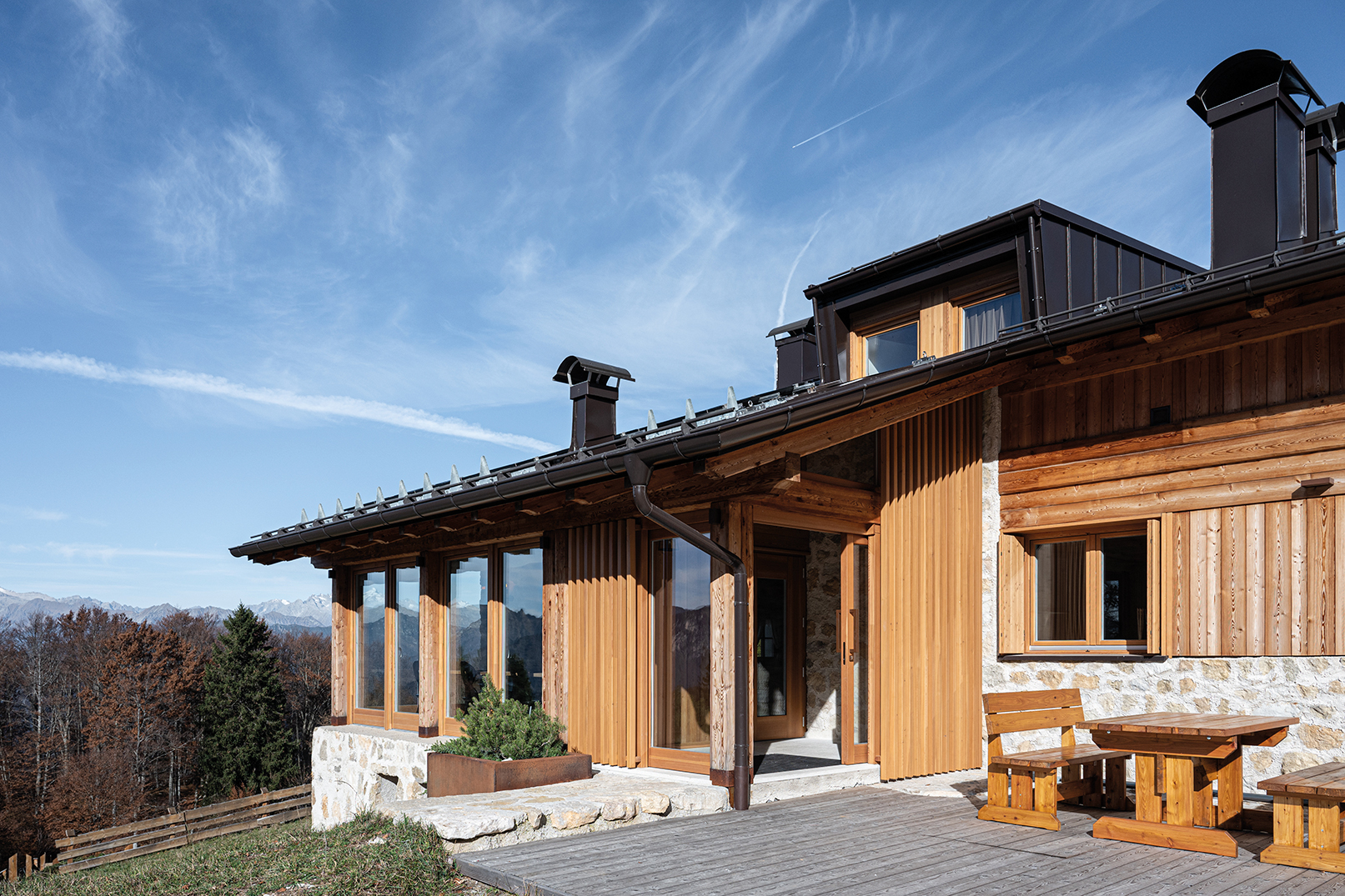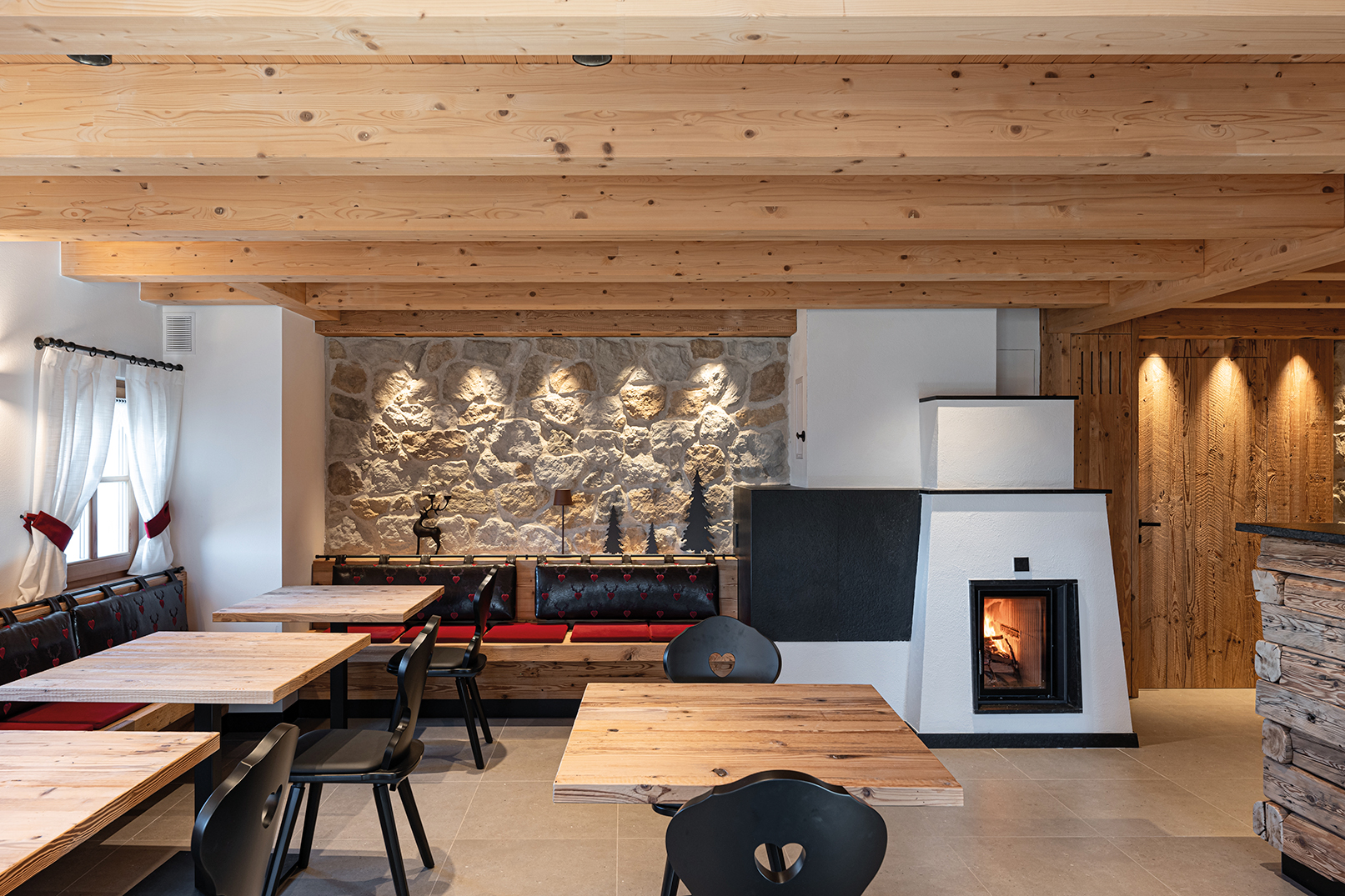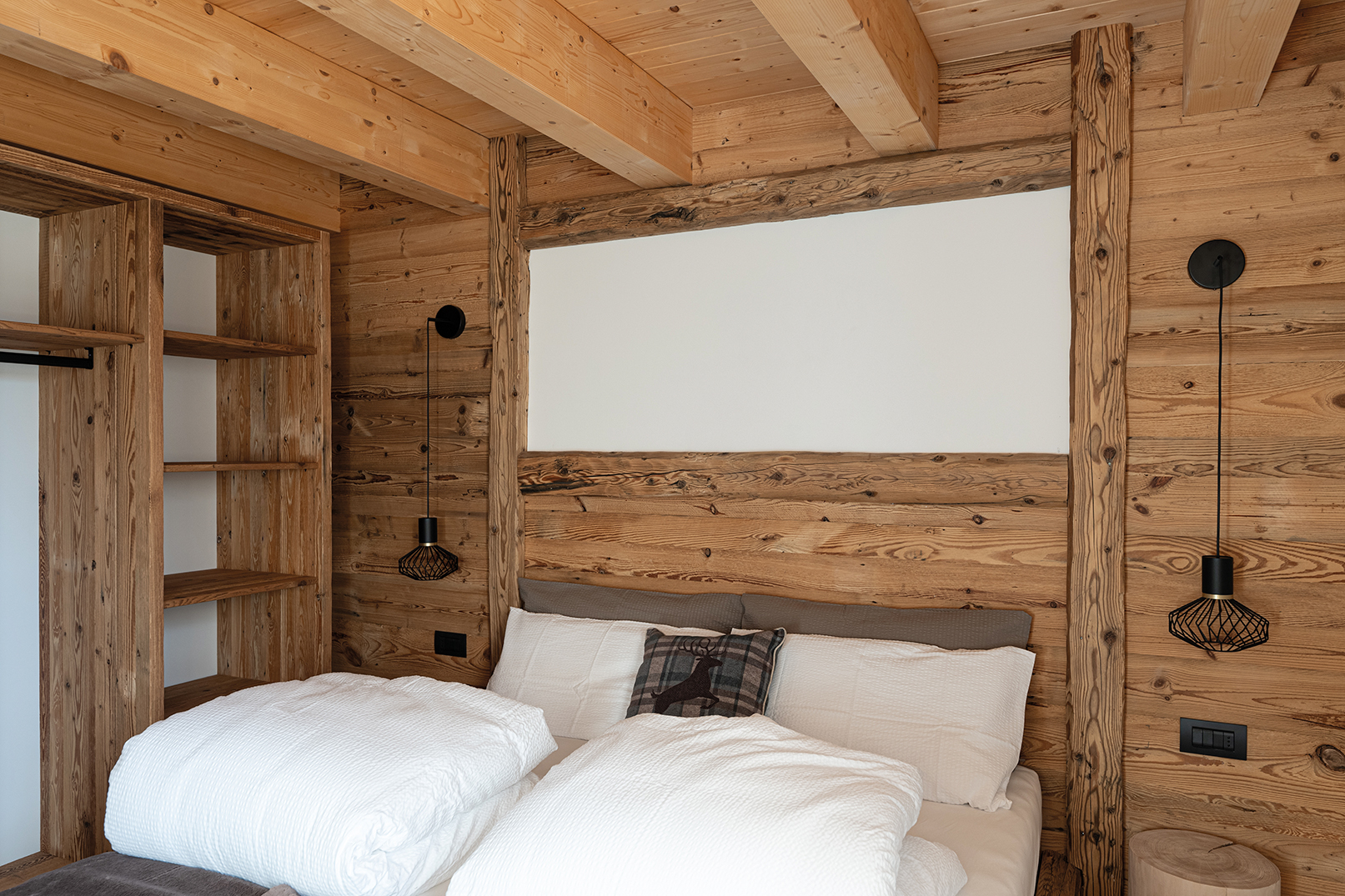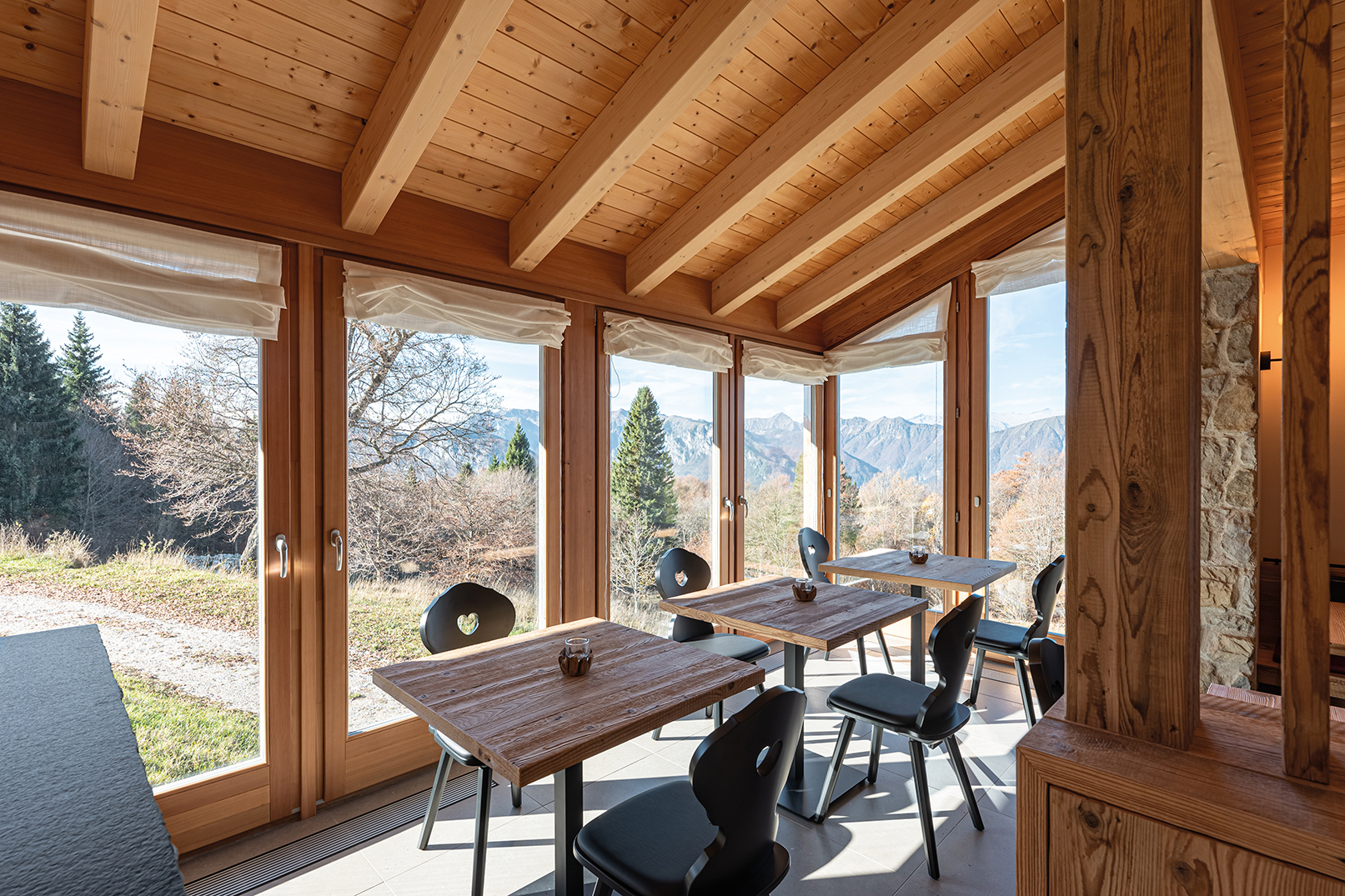La rinascita di Chalet Brento, emblema del metodo Alpenos
Certe architetture non si costruiscono. S’ascoltano.
Un po’ come lo Chalet Brento, l’habitat alpin chic incastonato nell’abbraccio del monte Casale, tra il Garda che scintilla a sud e l’Adamello, la Presanella e il gruppo del Brenta che vegliano da lontano.
È qui che Alpenos ha messo radici, con un pensiero profondo: far rivivere, non solo ristrutturare.
L’intervento sullo storico edificio ottocentesco abbandonato negli anni ’70, su progetto dell’architetto Giovanni Giovanelli, è stato un gesto di riconciliazione con il paesaggio e con la sua memoria. Dopo un primo salvataggio strutturale della parte nord, la vera sfida è iniziata nel 2020: ridare vita alla metà sud in modo coerente, rispettoso, contemporaneo. Per l’interior si è scelto il CLT, il legno strutturale a strati incrociati, per la sua velocità di posa — fondamentale in alta quota — e per le sue qualità intrinseche: calore, traspirabilità e isolamento. Anche l’esterno parla d’identità alpina: la geopietra avvolge, infatti, le superfici con sobria eleganza, richiamando le finiture originali, la malta di calce a raso sasso custodisce il sapore del tempo e, infine, il larice sul prospetto est sussurra la lingua della tradizione. E sopra tutto, silenziosi, i pannelli fotovoltaici: perché oggi abitare la montagna significa, soprattutto, amarla.
Per sempre.
Roots
The rebirth of Chalet Brento: a symbol of Alpenos’ approach
It is in Chalet Brento, an alpine-chic haven nestled in the embrace of Mount Casale, surrounded by Lake Garda and the peaks of Adamello, Presanella, and the Brenta group, that Alpenos has laid down roots, driven by a profound intention: not just renovating places, but bringing them back to life. The restoration of this historic 19th-century structure – abandoned since the 1970s and reimagined by architect Giovanni Giovanelli – was an act of reconciliation with the landscape. After an initial structural rescue of the northern wing, the true challenge began in 2020: to breathe life into the southern half in a way that felt consistent, respectful, and contemporary. For the interiors, the material of choice was cross-laminated timber: fast to install – a key advantage at high altitude – and rich in natural qualities: warmth, breathability, and insulation. Outside, Geopietra clads the surfaces with understated elegance, evoking the original finishes along with the lime-based mortar, while larch wood clads the eastern façade. On the roof, photovoltaic panels – because living the mountains today means, above all, loving them. Forever.







